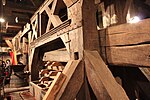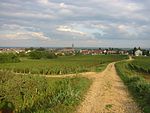Canton of Chenôve
Cantons of Côte-d'OrCôte-d'Or geography stubs
The canton of Chenôve is an administrative division of the Côte-d'Or department, eastern France. Its borders were modified at the French canton reorganisation which came into effect in March 2015. Its seat is in Chenôve.It consists of the following communes: Chenôve Marsannay-la-Côte
Excerpt from the Wikipedia article Canton of Chenôve (License: CC BY-SA 3.0, Authors).Canton of Chenôve
Chemin du Clos du Roy, Dijon
Geographical coordinates (GPS) Address Nearby Places Show on map
Geographical coordinates (GPS)
| Latitude | Longitude |
|---|---|
| N 47.29 ° | E 5 ° |
Address
Chemin du Clos du Roy
Chemin du Clos du Roy
21300 Dijon, Le Mail
Bourgogne-Franche-Comté, France
Open on Google Maps









